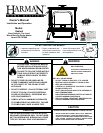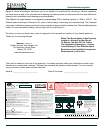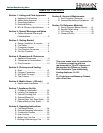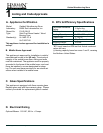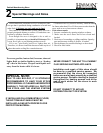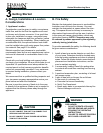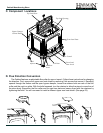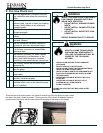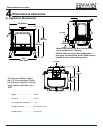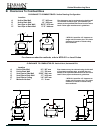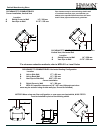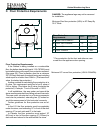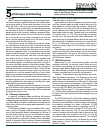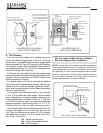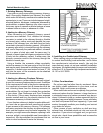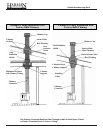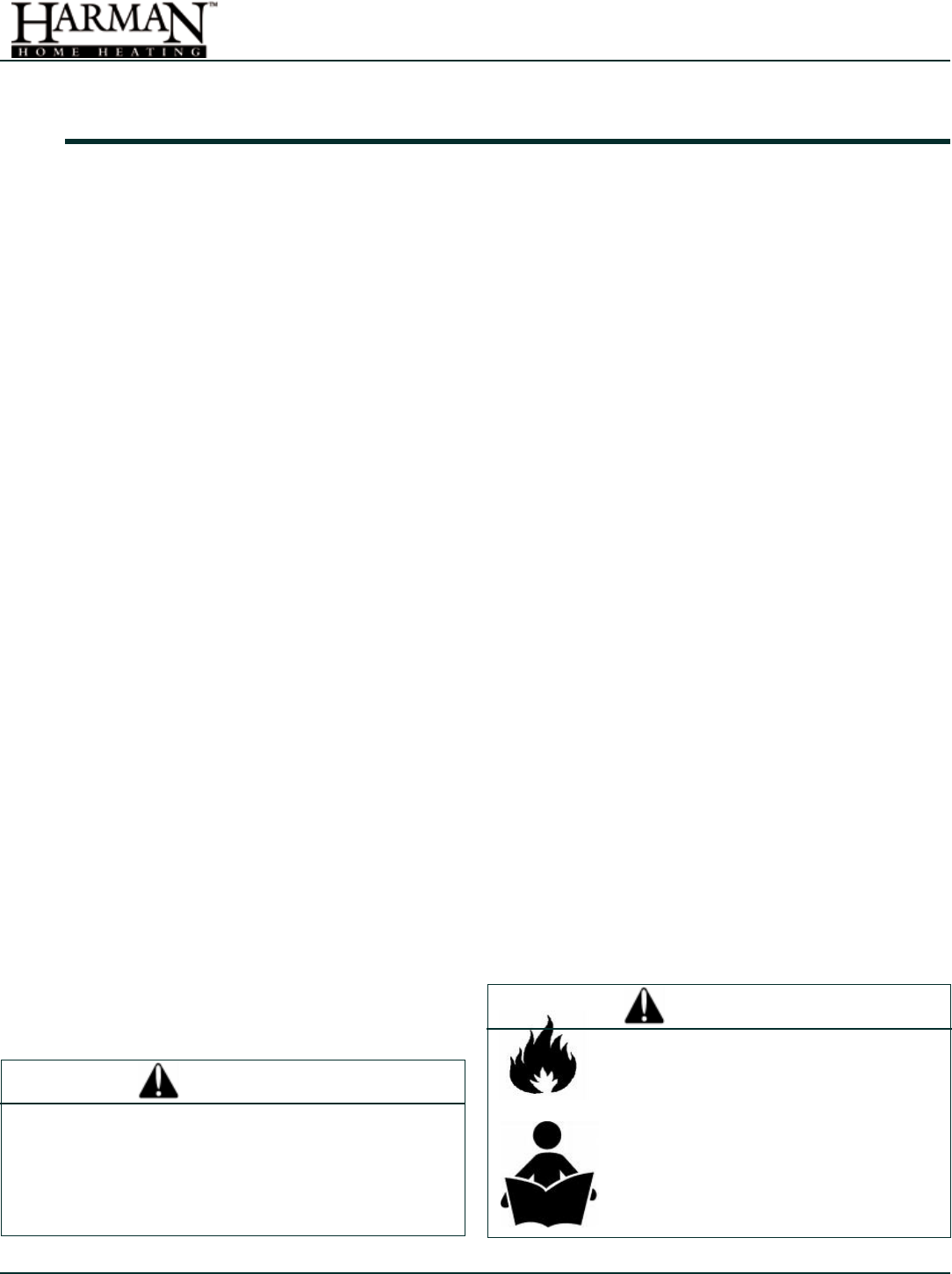
6
Dry Seasoned Wood Only! 3-90-798 Save These Instructions
Consideration must be given to safety, convenience,
trafc ow, and the fact that the appliance will need
a chimney and chimney connector. It is a good idea
to plan your installation on paper, using exact mea-
surements for clearances and oor protection, before
actually beginning the installation. When installing on
a combustible oor, the optional bottom heat shield
must be installed along with using proper oor protec-
tion material. See page 12 for details.
Maintain specied vent clearance to combustible
requirements listed by the vent manufacturers instruc-
tions and all clearance to combustibles listed in this
manual.
Check with your local building code agency before
you begin your installation. Be sure local codes do not
supersede UL specications and always obtain the
required permit so that insurance protection benets
cannot be unexpectedly cancelled. If any assistance
is required during installation, please contact your
dealer.
We recommend that a qualied building inspector and
your insurance company representative review your
plans before and after the installation.
Be sure to provide a source of fresh air to the room
or directly to the appliance. Make-up air is needed to
replace what the chimney draws away through the
appliance.
Maintain the designated clearances to combustibles.
Insulation must not touch the chimney. You must
maintain the designated air space around the chim-
ney. This space around a chimney is necessary to
allow natural heat removal from the area. Insulation
in this space will cause a heat buildup, which may
ignite wood framing.
To provide reasonable re safety, the following should
be given serious consideration:
1. Install at least one smoke detector on each oor
of your home. Detectors should be located away
from the heating appliance and close to sleeping
areas. Follow the smoke detector manufacturer's
placement and installation instructions, and be
sure to maintain regularly.
2. A conveniently located Class A re extinguisher
to contend with small res resulting from burning
embers.
3. A practiced evacuation plan, consisting of at least
two escape routes.
4. A plan to deal with a chimney re as follows:
In the event of a chimney re:
a. Evacuate the house immediately.
b. Notify Fire Department.
c. Never apply water to a suspected chimney re.
Serious damage could occur.



